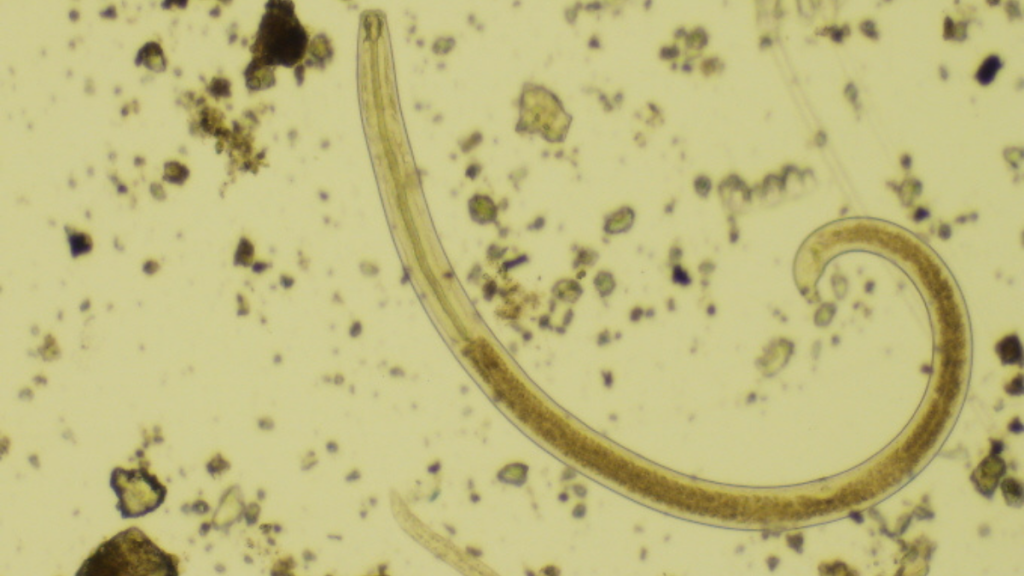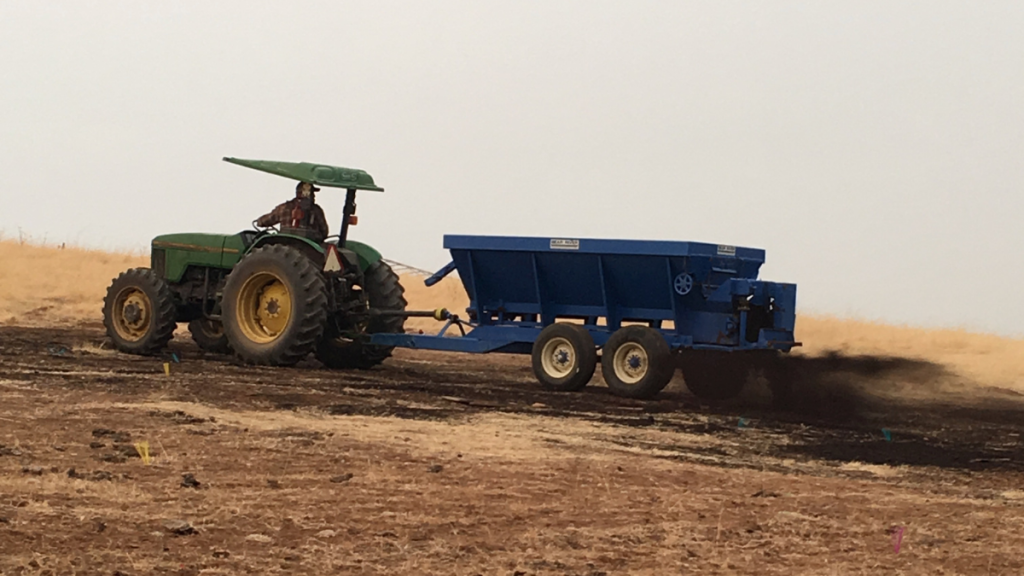USA
May 15, 2021
by Ashley Shaw, University of Oregon
It might be hard to believe, but you may never have seen the most abundant animal on Earth: soil nematodes! They represent eighty percent of animal life by number and live in nearly every habitat. They are hard-working and important organisms.
Soil-dwelling nematodes, which I research, are tiny – usually between 1/500th to 1/20th of an inch! (But there is a nematode that lives inside sperm whales that is nearly thirty feet long.)
Indeed, some of the best-known nematodes are parasites. There are different nematode parasites of plants and animals. That means they live in or on the plant or animal, cannot survive without them, and sometimes kill their host (and then move on). But many more nematodes are free-living. In soils, nematodes live in water films that surround soil particles. Both plant root parasitic and free-living nematodes play an important role in plant health and plant feedback to soil carbon.
 After collecting soil samples, Shaw and her research group inspect nematodes by extracting them into water and examining them in a dish using a microscope. Shown: a diverse grouping of nematodes (longer, worm-like structures) along with a tardigrade and some small soil debris that made it through the extraction process. Credit: Ashley Shaw
After collecting soil samples, Shaw and her research group inspect nematodes by extracting them into water and examining them in a dish using a microscope. Shown: a diverse grouping of nematodes (longer, worm-like structures) along with a tardigrade and some small soil debris that made it through the extraction process. Credit: Ashley Shaw
An incredible variety of soil nematodes exist at all levels of the soil food web. At the base of the food web, some feed on plants and algae, others graze on microbes (bacteria and fungi). At higher levels in the food web, nematodes that are predators and omnivores eat other invertebrates, protists, and even other nematodes. In some cases, “predatory” nematodes are the “good guys,” keeping populations of parasitic nematodes in check.
This food web is important to plant health and soil carbon storage. For example, by feeding on bacteria and fungi, microbial grazing nematodes help return nitrogen to the soil through their waste. This makes the nitrogen available again for plant use, improving plant growth.
Nematodes bring other species into the soil food web, too. Some bacteria survive the nematode gut and are deposited along with nematodes’ waste products. Still more hitch a ride on the outside of nematodes’ bodies. As nematodes move around in soil, they deposit bacteria in new places, spreading them around. The bacteria can contribute to and speed the process of decomposition, returning carbon to the soil for storage.

Sometimes Shaw uses a tool, like a paintbrush, with a single fiber to pick up nematodes extracted out of soil samples. Shown: a nematode on the end of a single fiber. Credit: Ashley Shaw
But most good things have a limit: at very high populations, nematodes that feed on bacteria and fungi can reduce their populations. This can lead to lower decomposition and nutrient turnover rates by bacteria and fungi, even lowering plant growth.
Plant parasitic nematodes attack roots using a piercing tool in their mouth. This “stylet” punctures plant cells so it can suck its carbon-rich juices. Some nematodes release chemicals that cause lesions or tumor-like growths on roots. They drain the plant’s strength above- and belowground.
In small populations, plant parasitic nematodes can stimulate root growth, but in high numbers they destroy roots, stunt aboveground growth, and cause disease. Lower plant growth (of both roots and shoots) leads to lower return of organic material to soil and eventually, lower soil carbon.
 Photo of a predatory nematode. Predatory nematodes attack and devour other nematodes. Through their feeding, they keep populations of plant parasites and microbial feeding nematodes in check, optimizing plant growth. Credit: Ashley Shaw
Photo of a predatory nematode. Predatory nematodes attack and devour other nematodes. Through their feeding, they keep populations of plant parasites and microbial feeding nematodes in check, optimizing plant growth. Credit: Ashley Shaw
While the nematode species responsible for plant diseases have received a lot of attention, far less is known about the non-parasitic part of the soil nematode community, which plays mostly beneficial roles in soil. Ensuring a balance between beneficial and plant parasitic nematode groups is important for plant health and its contributions to soil carbon.
Generally, plant-root parasitic nematodes harm plant growth and microbial-feeding nematodes improve it, but other nematodes are also important. For example, predatory nematodes play an important role in regulating populations of plant-parasitic and microbial-feeding nematodes. Through their feeding, they keep populations of plant parasites and microbial feeding nematodes in check, optimizing plant growth.
However, predatory nematodes are also highly sensitive to environmental changes. Their populations often decline with soil disturbances such as pesticide use, fertilization, tilling, or soil compaction. Situations where soil is heavily managed often leads to very low predator populations and higher populations of harmful groups. Predators are also sensitive to changes in rain and temperature, which can also cause an imbalance toward harmful groups.
 Shaw is studying compost additions to rangelands to determine the effects on soil carbon and plant growth. Compost also changes the soil food web – including the numbers and diversity of nematodes. Credit: Ashley Shaw
Shaw is studying compost additions to rangelands to determine the effects on soil carbon and plant growth. Compost also changes the soil food web – including the numbers and diversity of nematodes. Credit: Ashley Shaw
My current research is examining how active land management practices can help boost beneficial nematode groups in soil by improving soil habitat. We are studying compost additions to rangelands and whether they can improve soil carbon storage and plant growth.
Compost directly provides nutrients and increases soil water retention, improving plant growth. Compost is also changing the soil food web in ways not seen in some of the other treatments in our study plots. We think that the soil organic matter in the compost improves soil habitat for predators, supporting the long and complex soil food webs with abundant predatory nematodes that help keep root parasitic nematode populations in check. The result is that plant disease and root parasitism has declined, leading to greater plant growth and root carbon inputs under compost treatments, which benefits soil carbon storage.